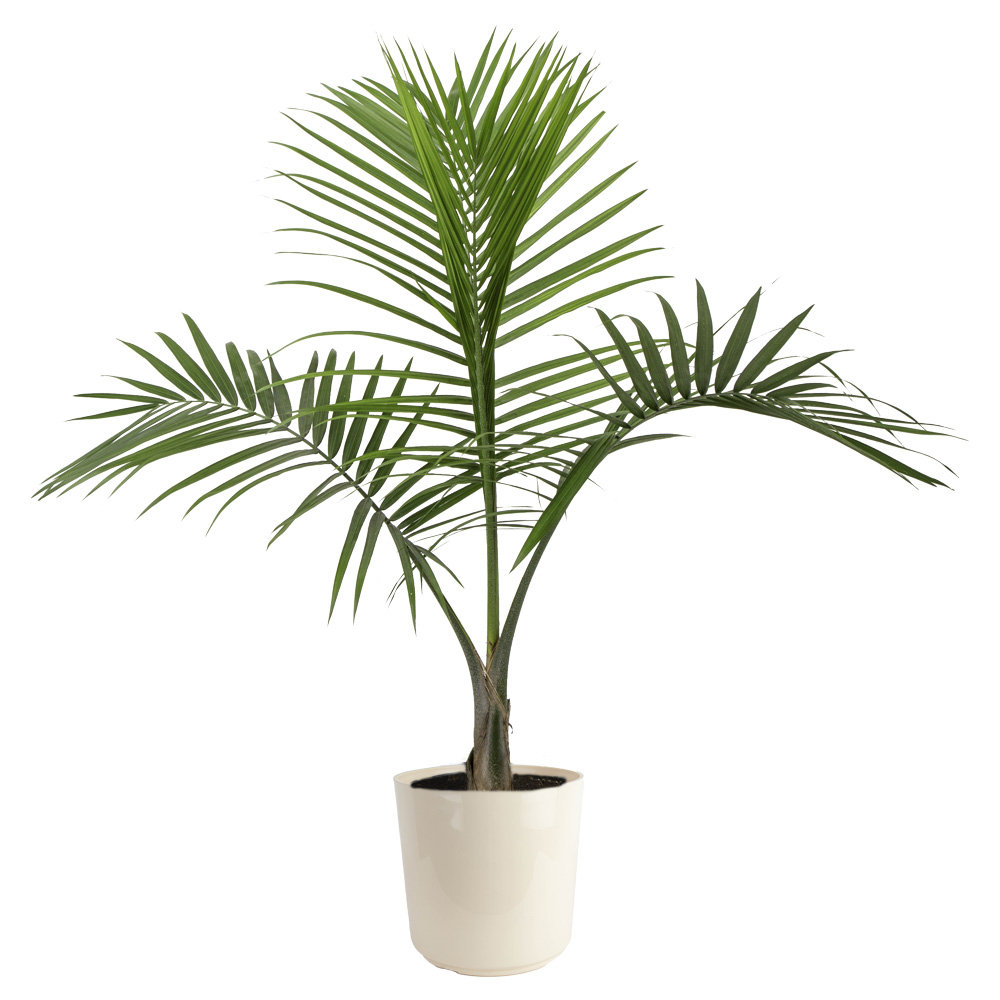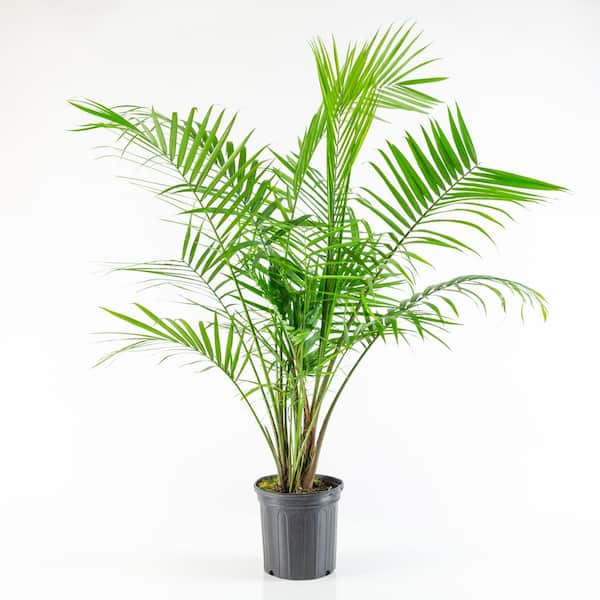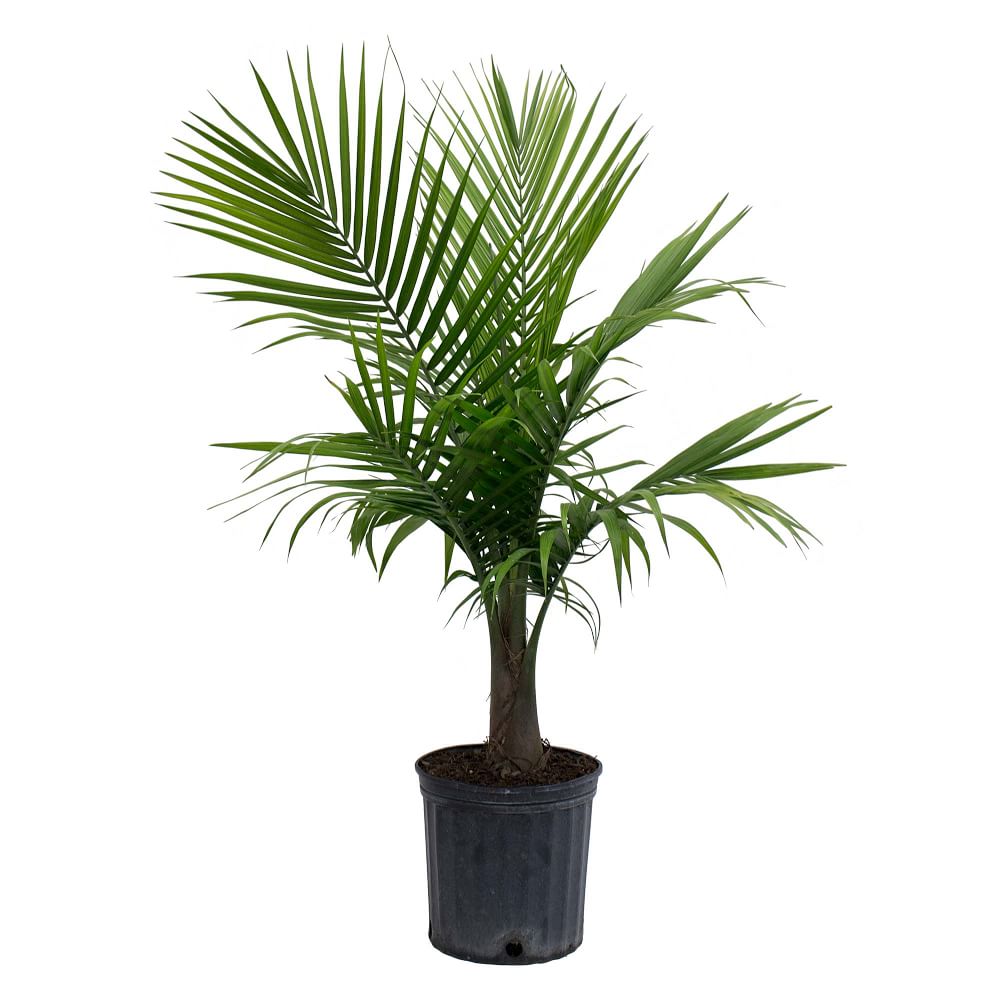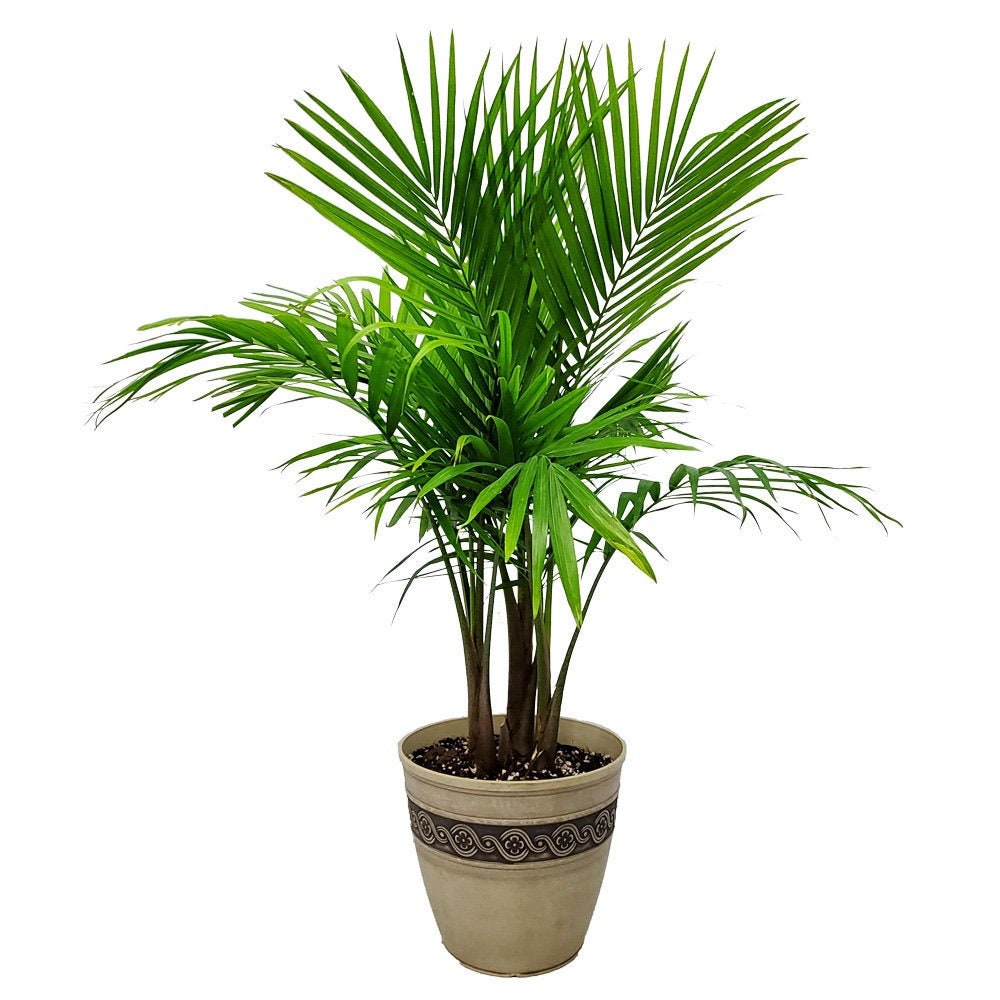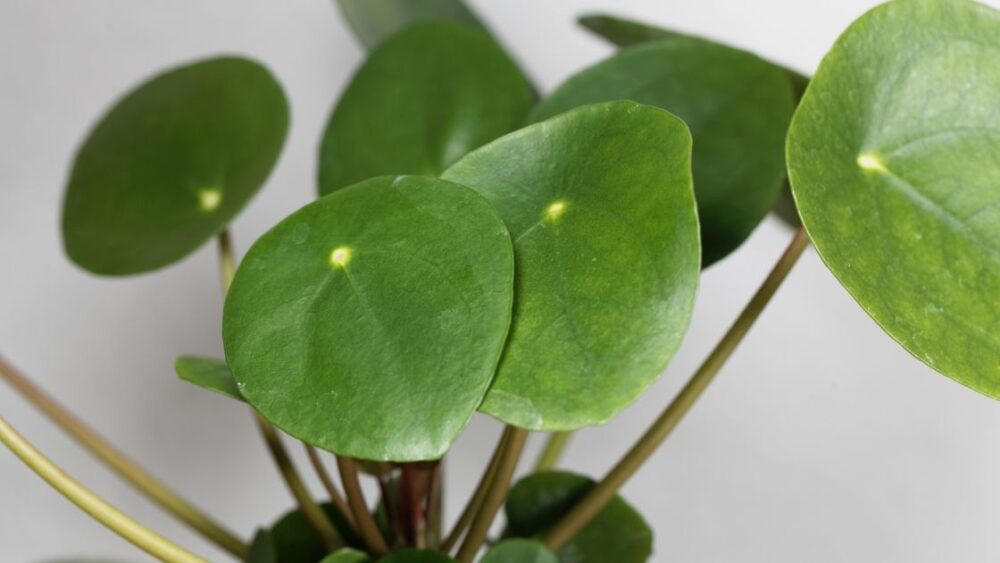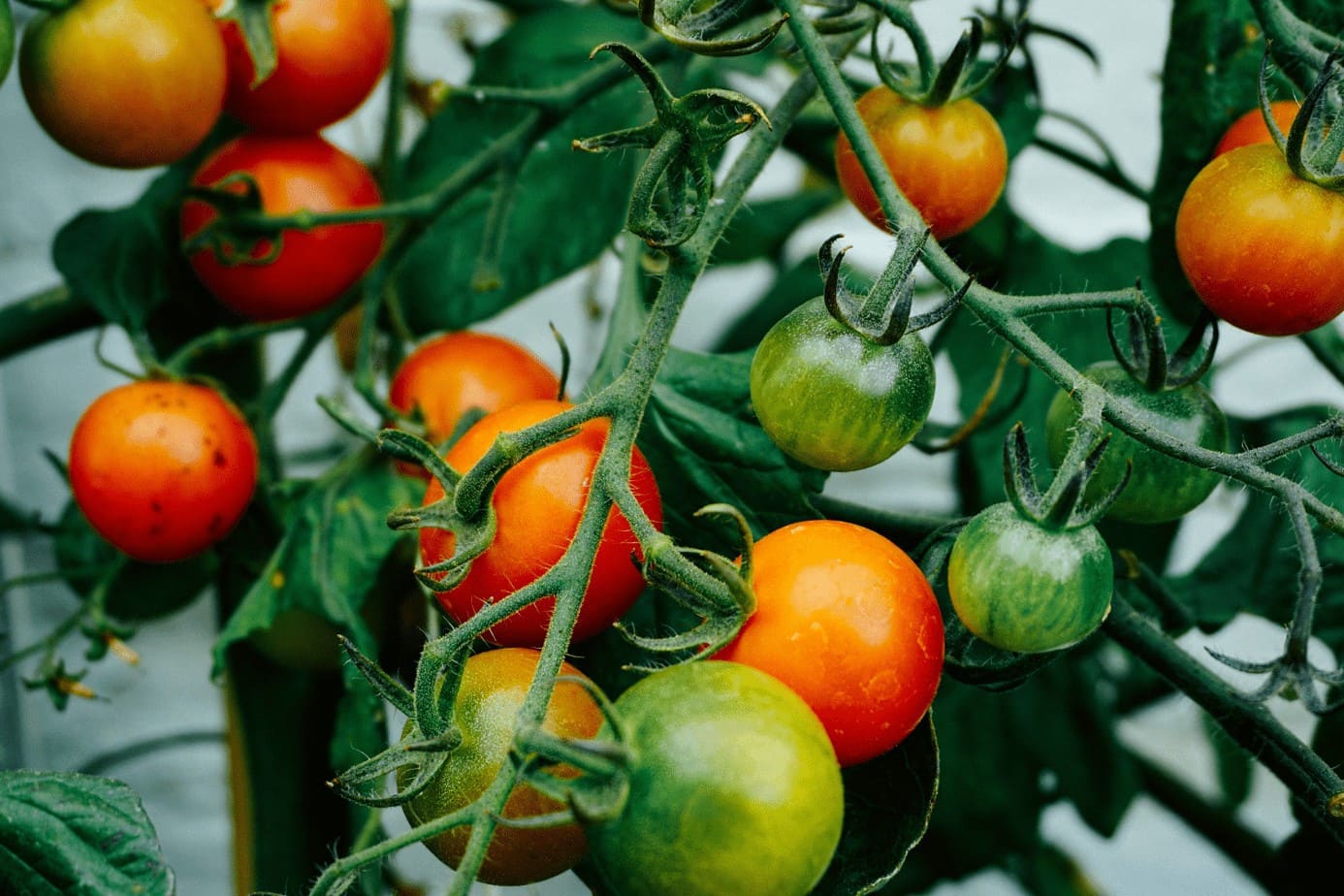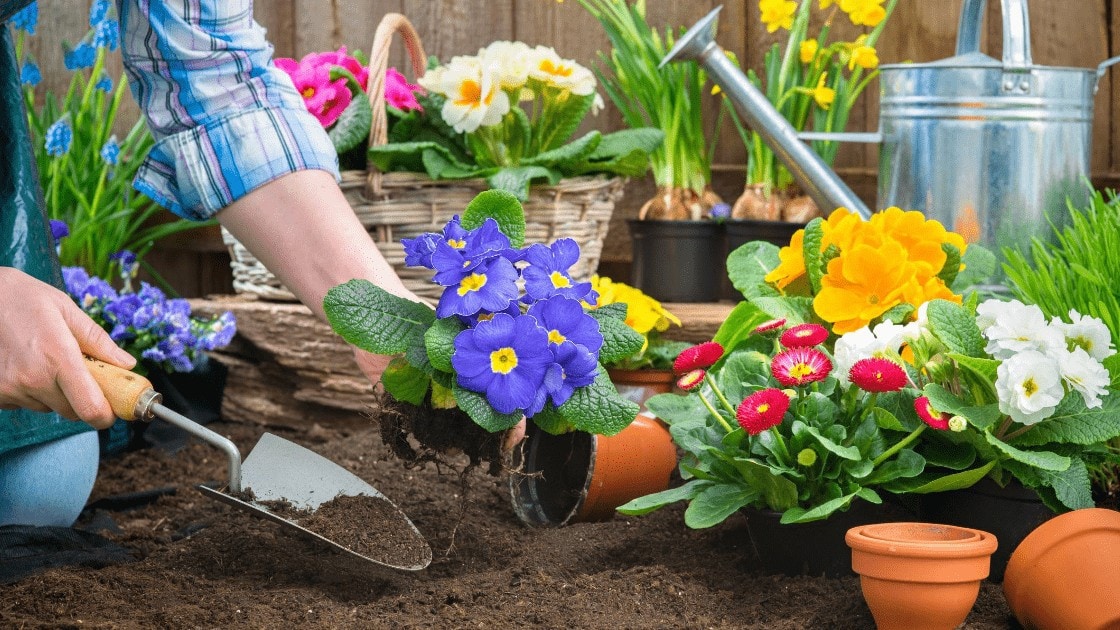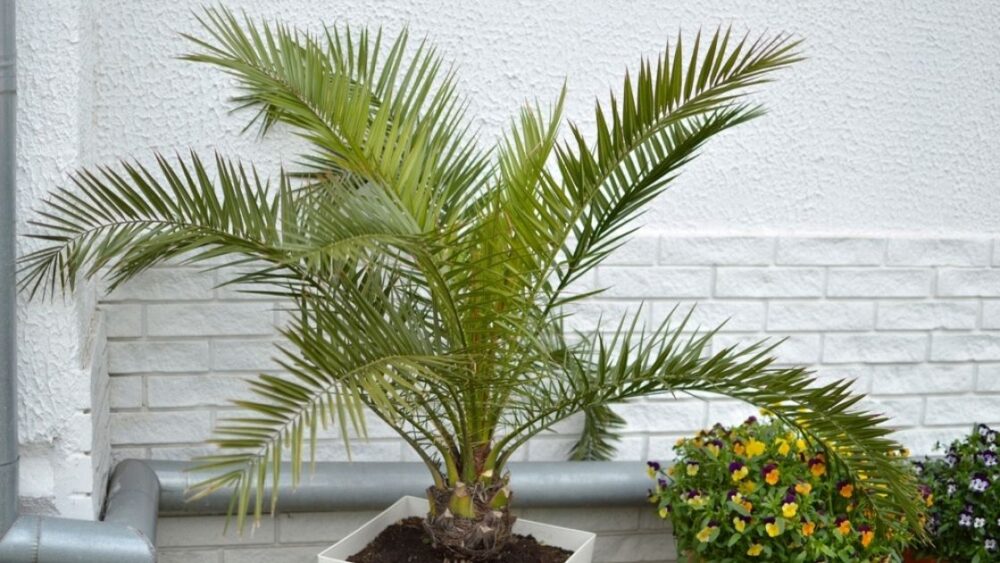
The majesty palm is a beautiful and easy-to-care-for houseplant that adds a laid-back, tropical vibe to any room. It is an indigenous tree of Madagascar. The majesty palm can reach about 30 meters (100 feet) in its natural habitat. However, it is becoming increasingly uncommon in its natural habitat.
Nowadays, the trees are usually grown as indoor trees, where the roots are confined to maintain a height of approximately ten feet. It has several stems topped with tall, arching fronds of green foliage. Young plants resemble kentia palms; adults resemble royal palms. These are two of the prettiest palms you can grow indoors. Majesty palms can also be successfully grown indoors if they receive sufficient indirect light, humid air, and hydration.
The Majesty Palm will add roughly one foot of growth every year when cultivated indoors until it reaches four to six feet, at which point its rate of development will significantly slow down. It utilizes as a landscaping tree in California, South Florida, and other tropical locations since it grows faster when grown outside, and its roots have more room to spread out.
Browse our Affiliate Products
Common Problems
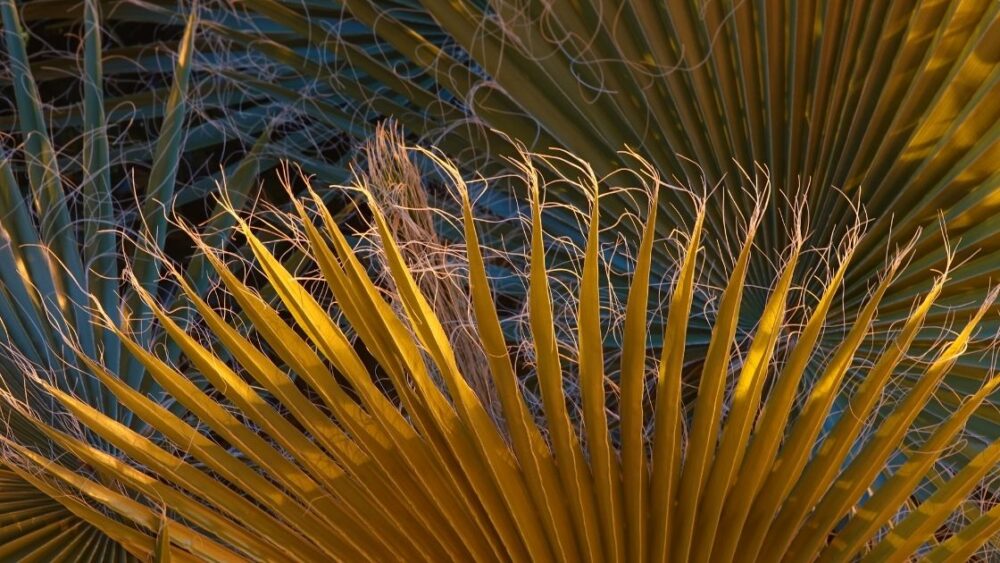
Majesty palm plants are easygoing, but they still have problems. You should know how to recognize and treat any issues in your Majesty palm so that you can act swiftly if the need arises.
- The leaves of a majesty palm will change color if it isn’t doing well. Due to lack of sunlight, the lower leaves on your palm will turn yellow. Inconsistent watering can also cause the leaves to be yellow.
- Less humidity or water causes the palm fronds’ tips to be brown and turn yellow. The leaves of the majesty palm will burn if exposed to too much direct sunlight.
- Moreover, pests such as aphids, scales, and whiteflies can attack Majesty palms. A lack of humidity makes this plant particularly vulnerable to spider mites and mealybugs. Early detection and less toxic treatment, such as horticultural oil, are recommended.
Majesty Palm Care

When it comes to grandeur palms, the right combination of heat, light, and fertilization is critical. If a plant is over-fertilized and cultivated in hot conditions but not given enough light, it will grow long and lean. When plants are exposed to a large amount of sunshine without an adequate supply of nutrients and water, they will burn. You probably don’t need as much fertilizer as you believe in achieving the ideal indoor-outdoor balance.
Plants with the moniker “majesty palm” are challenging to work with. If you’re starting indoor gardening, you’d be better off with a Kentia, Bamboo, or Parlor Palm (Chamaedorea Elegans) plant.
Common Name
Common names of this palm are Majesty palm and Majestic palm.
Scientific Name
The scientific name of Majesty palm is Ravenea rivularis
Growth Cycle (Perennial)
The majesty palm is a common houseplant that takes time and attention to grow into a magnificent specimen. However, it will thrive if you provide it with adequate light, water, humidity, and fertilizer. This palm tree is perennial and only needs to be replanted once a year. This replantation is because it grows at a rate of one foot per year. However, it starts to grow slower between the heights of four and six feet.
Sunlight Effect
Majesty palms, which grow in the understory of their natural habitat, should be given as much light as possible when grown indoors. For a few weeks, relocate stretched-out and bleached plants to a brighter place; nevertheless, avoid exposing them to direct sunshine.
Watering
It is essential to keep the potting soil uniformly moist but not soggy. Keep the plant’s soil from drying out between waterings, or you’ll start losing lower leaves.
Adult Size
Majesty palms can grow up to 80 feet tall and have fronds up to 8 feet long in their native habitat. The Majesty Palm can grow to 15–20 feet if adequately cared about.
If you like to keep your palm indoors, check out our selection of planting pots by clicking here: Plant Pots
Planting Zones
Outdoors, Majesty Palms can thrive in tropical and subtropical climates in growth zones 9 to 11. Ideally, they’d want moist soil with some afternoon shade. Most growth zones allow for the outdoor cultivation of Majesty Palm trees in containers. This plant can withstand temperatures as low as 40 degrees Fahrenheit.
Weather Hardiness
This plant can grow well and thrive between 65 and 85 degrees Fahrenheit. High humidity is preferred, yet it can thrive under average household humidity. Running a humidifier in colder climates, where the air can become extremely dry in the winter, can improve the health of plants. The plant will get the humidity it needs if you mist it daily. Insect pests can thrive in conditions of low humidity.
Propagation Of Majesty’s palm
Due to the limited commercial production of seeds, Majesty palms can only be grown from seed. Sources are pretty challenging to come by for home gardeners. It’s also impossible to grow this plant from seed or stem cuttings.
However, division can separate the offset “pups” from the mother palm. When repotting a plant, it’s ideal to use this technique to avoid causing undue stress to the plant. Here are the steps for division:
- To remove the plant, gently roll it out of its pot while the container is on its side. Please do not attempt to remove the palm from the bank by yanking it when holding it erect.
- Keep an eye out for puppies or offspring that can be removed from the mother plant’s roots.
- Soak the root ball in water for a few minutes to loosen the puppies. A sterilized, sharp knife can be used if necessary. If the origins of the puppies are too lengthy for the new pots, you can cut them back.
- Use fast-draining soil for offshoots. Please do not allow the jars to sit in water, but water them until they begin to leak from the bottom.
- As with the mother plant, place the jars in a well-lit area. Fertilize the baby palms in about a month.
Toxicity Of Majesty palm
According to the EPA, the majesty palm is not toxic to pets and humans. So, even if your cat destroys your tree, the only thing that suffers is the tree’s beauty.
Dormancy
Palm trees tend to go into dormancy during the fall and winter months. So, until the temperature warms up, its growth will be slowed or stopped. It’s a means of surviving the harsh winters that await us. The seeds of palm trees have a unique ability to remain dormant for long periods.
Soil
These palms like it when the pH level is as low as 5, so don’t worry that a peat-based mixture will make it more acidic and hurt your majesty palm. A standard potting mix with a bit of extra peat is the best way to grow them for majesty palms. For their roots not to get wet, these palms need good drainage.
Click to check out amazon’s palm tree food:
Fertilization For Majesty palm
Applying a light liquid fertilizer once or twice during the growing season is okay, but don’t apply it in winter. If you see that your indoor palm plant is growing longer, cease fertilizing it or reduce the amount you’re providing it. Cacti-specific fertilizer mixtures are an excellent choice for home gardeners.
A once-a-month application of Epsom salts will ensure that the leaves don’t turn yellow and that the magnesium content is enough. Plants may require iron supplementation to avoid further yellowing and leaf loss. When using iron, follow the manufacturer’s instructions on the product label.
What To Do When Majesty’s palm Is Dying?
Mist leaves every seven days to enhance humidity, water evenly every week, maintain a temperature range of 65°F to 75°F (18°C to 23°C), and clip back any brown, dead leaves to stimulate new growth to revive a dying majesty palm.
Conclusion
If you’re looking for a new houseplant, consider the majesty plant. With proper attention, it will adapt to its new environment and become a familiar face among your other houseplants.
The appropriate combination of humidity, light, and moisture may be essential to the majesty palm. On the other hand, the majesty palm may be the queen of any indoor castle with the correct fertilizer and soil, a regular watering schedule, and adequate light.




